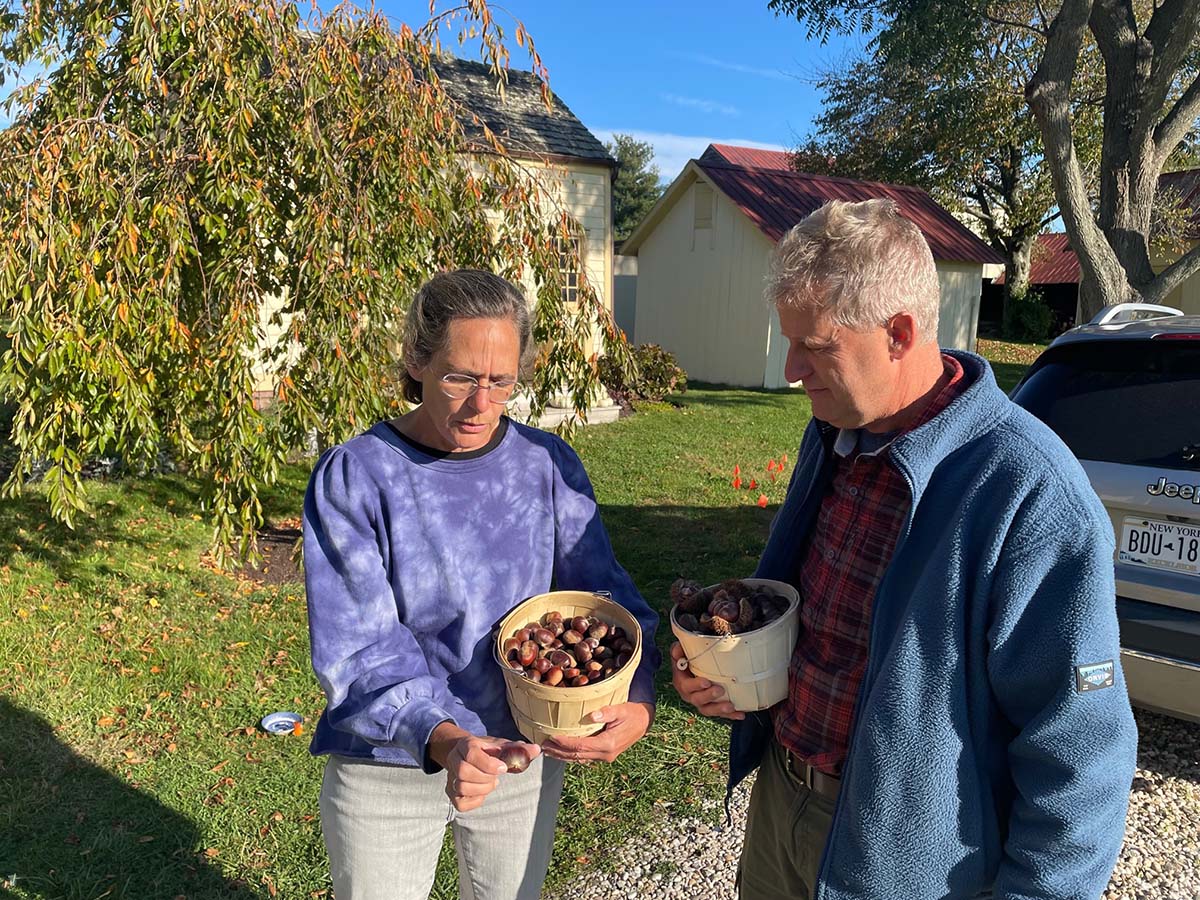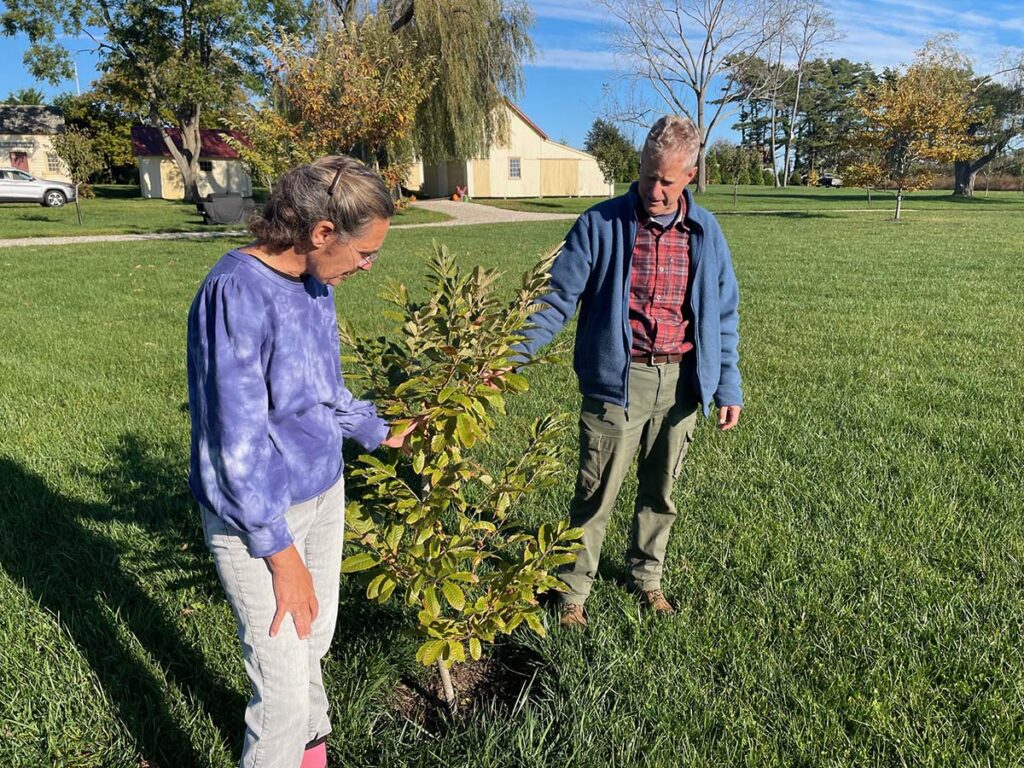
 press-releases
press-releases 

The American chestnut tree makes a Long Island comeback after four billion trees were wiped out in early 1900s. Hope and history are being revived at Salt Air farm in Cutchogue.
Before the mid-twentieth century, the American chestnut tree, a majestic beauty that produced edible nuts — “chestnuts roasting on an open fire,” as the song goes — once blanketed forests from New England to Mississippi.
Beginning early in the 20th century, a blight devastated the species, killing more than four billion trees in just 50 years. They were wiped out on Long Island, where the trees were prized not only for their chestnuts, but for their wood, used in making furniture and as beams for barns.
Today, in an act of rebirth, seven American chestnut trees are growing on Salt Air farm. A large one on the north side of the farm was planted in 1998 by Jack Wickham; six others were more recently planted by his daughter, Prudence Heston, and her husband, Dan.
Their presence inspires hope that they can be brought back from what scientists call “near” extinction, in a place where they were once abundant. It also signals a firm belief in the future, where generations to come will be able to enjoy the American chestnut’s presence and understand its unique role in America.
“We hope to plant more,” Ms. Heston said as she and Mr. Heston gave a tour of the chestnut trees they have planted. Both see the American chestnut — a historic tree on their historic farm — as a present-day acknowledgment of its place in history.
“They make me feel very grateful for the land and the history here,” she said. “They remind me of all the gifts in life. I’m so thankful.”
Nationwide, efforts are underway to slowly, carefully, bring these trees back across their broad former range, but in varieties that are blight resistant. Salt Air farm is one of them on the North Fork.

The seven on Salt Air farm are blight resistant and the big one — at least 30 feet in height with a stout trunk — produces beautiful, mahogany-colored nuts. Holding them in your hand is grasping a piece of America’s past.
During the tour, Mr. Heston peeled the outer shell from one with his pocketknife. “They are really delicious,” he said, handing a yellowish nut to a visitor. The visitor agreed.
In a different time, chestnuts were roasted on street corners on cold winter days in cities like New York and sold warm in little bags. The smell from the roasting nuts was said to permeate a neighborhood.
“The Christmas Song,” which opens with the line “chestnuts roasting on an open fire,” was written in the 1940s by Mel Tormé and first recorded by Nat King Cole.
If a single tree could tell the American story, it would be the chestnut. Its nuts were a staple of the Native American diet and, if some accounts are to be believed, were on the table when English colonists and their new Indigenous neighbors sat together for a meal that would later be mythologized as the first Thanksgiving.
The nuts were also in the diet of enslaved people up and down the East Coast. Farm animals also fed on them, as did deer. This produced a self-renewing cycle for early residents of this land: The tree produced edible nuts, which also fed the deer, whose meat fed the Indigenous people and the colonists.
One culinary historian wrote that the American chestnut “was one of the most bountiful foods that America has ever known.” The nuts were seen as a kind of natural blessing, which is how the Hestons on their Cutchogue farm see it.
The blight that killed nearly all American chestnuts was first seen in 1905 in Maryland and Washington, D.C. Other accounts say it arrived in America when Japanese chestnut trees were introduced and was first seen in and around the area that now includes the Bronx Zoo.
Scientists at an upstate SUNY campus and a number of other academic institutions in recent years have used genetic engineering to produce a blight-resistant chestnut tree in ongoing research projects. It is these blight-resistant chestnuts that are being reintroduced to their former territory.
For the Hestons, the seven chestnuts on their farm represent what once was so abundant, but also, as they watch them grow, offer hope for the future.
“These trees are wonderful if you care about history and the ecosystem,” Ms. Heston said. “They really mattered to people who lived on this land. I see it as being about thankfulness. In the future, when you see a big, beautiful tree — that’s a gift from a previous generation.”
24World Media does not take any responsibility of the information you see on this page. The content this page contains is from independent third-party content provider. If you have any concerns regarding the content, please free to write us here: contact@24worldmedia.com